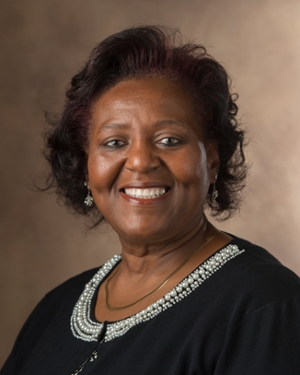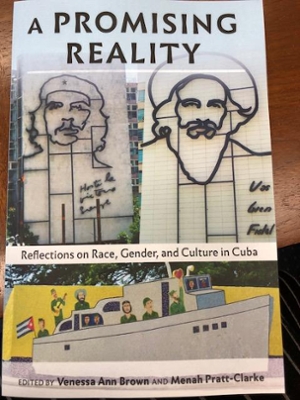 Cubans’ strong sense of pride and resilience captivated Southern Illinois University Edwardsville’s Venessa A. Brown, PhD, associate chancellor for the Office of Institutional Diversity and Inclusion, and chief diversity officer.
Cubans’ strong sense of pride and resilience captivated Southern Illinois University Edwardsville’s Venessa A. Brown, PhD, associate chancellor for the Office of Institutional Diversity and Inclusion, and chief diversity officer.
A trip to Cuba enthralled Brown so much that when she returned home, she documented her perspectives and experiences in A Promising Reality: Reflections on Race, Gender and Culture in Cuba. The book, co-edited by Brown and Menah Pratt-Clarke, was published in January.
Pratt-Clarke received her PhD and JD from Vanderbilt University. She is vice president for Strategic Affairs, vice provost for Inclusion and Diversity, and professor of education at Virginia Tech.
Brown and Pratt-Clark were part of a group of chief diversity officers, faculty and educators from the U.S., who traveled to Cuba in July 2015 as part of a National Association of Diversity Officers in Higher Education (NADOHE) delegation. Brown and Pratt-Clark wrote the introduction and conclusion together, and each woman wrote a chapter for the book. The other seven contributors were educators who were part of the delegation.
Key themes in the 13-chapter book include Cuban culture, the Cuban Revolution, politics, economics, education, gender, equity and social change. According to its summary, “The book takes readers on a journey of thought-provoking stories that reflect the excitement, uncertainty, complexity, and promising possibilities on the cusp of changing diplomatic, political, economic, and social relationships between the United States and Cuba. A Promising Reality seeks to broaden the perspectives of its readers regarding U.S.-Cuban relations.”
“Cuba was nothing like what we had been taught. I learned a lot about the history and the revolution,” said Brown of her first trip to the country, located less than 100 miles from Miami.
“Cuba is extremely antiquated. It is like going back to the 1950s and ‘60s in America,”  added Brown, who was in the country for 12 days. “There are no chain stores of any kind. Yet, the people are proud of their country and enjoy close-knit communities. I’m glad Julie Furst-Bowe encouraged me to go and also visit the University of Havana, where SIUE has a collaboration with the Cuban and Caribbean Center.”
added Brown, who was in the country for 12 days. “There are no chain stores of any kind. Yet, the people are proud of their country and enjoy close-knit communities. I’m glad Julie Furst-Bowe encouraged me to go and also visit the University of Havana, where SIUE has a collaboration with the Cuban and Caribbean Center.”
In a review for Brown’s book, Furst-Bowe, former SIUE chancellor and vice president of instruction at Chippewa Valley Technical College, wrote, “Issues of race, gender, cultural identity, and the African experience in Cuba are explored and discussed from a number of interesting perspectives. Given the rapidly changing economic, political, and social relationships between the United States and Cuba, this book is highly recommended for college and university courses on international studies, international affairs, political science and sociology.”
“We tell one side of Fidel Castro,” said Brown. “We see him as a negative here, but the people really praised him because of his attempts to break down the barriers of classism. I write about it in the chapter, ‘Race, Class and Culture in Cuba.’”
“Initially, when Castro came in, he was fighting for more equity for all Cubans,” continued Brown. The story about Castro changes based upon to whom one is speaking. “Much of the Cuban pride is their ability to sustain on their own without U.S. influence,” explained Brown. “I was drawn to their strength and courage as a people.”
Brown was also attracted to the country because of her experiences as an African American and as a woman. “From the moment I stepped off the plane and for the duration of my stay, I never felt out of place as an American or African American. Nor did people treat me differently for being a woman,” declared Brown. “In the United States, I often feel the weight of my label. I feel societal limitations to what I can and cannot do, despite those limitations being based on false and antiquated belief systems. In Cuba, I felt like a person first.”
“I recognize that my experience in Cuba was limited, in that I witnessed the culture through a highly structured program and for a small amount of time,” Brown continued. “I do not doubt that Cuba continues to struggle with racial inequalities and gender roles. However, I noticed a personal difference in the way I was perceived by the Cuban people. Other Americans of color who traveled with me shared the sentiment.”
Being in Cuba also brought back memories of her childhood, Brown said, because of the cohesive communities and strong work ethic she observed. She writes about it in the chapter, “Cuba and My Connections to My Childhood.”
For more information or to order A Promising Reality, visit the Black Studies and Critical Thinking series at peterlang.com or at amazon.com.
Photo: Venesssa Ann Brown, PhD, associate chancellor for the Office of Institutional Diversity and Inclusion and chief diversity officer.